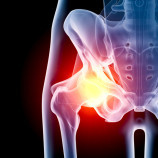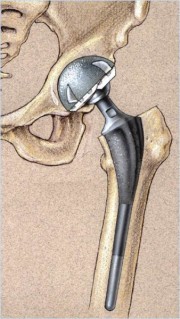
Conservative treatments
* Education
* Activity modification
* Exercise (non-impact exercise such as elliptical, bicycling, swimming, water aerobics)
* Weight loss (3 times your body weight goes through each hip with walking)
* Cane or walker
* Supplements such as Glucosamine/Chondroitin, Fish oil, etc.
Medications
* Tylenol (acetominophen)
* Over the counter NSAIDs such as Aleve (naprosyn), Motrin/Advil (ibuprofen)
* Prescription NSAIDs such as Celebrex, Mobic (meloxicam)
Injections
Cortisone injections are rarely used to help diagnose or treat arthritis in the hip
When are you ready for a hip replacement?
* When the pain or stiffness becomes so severe and you lose the ability to perform routine activities
* Inability to participate in activities such as golfing, playing tennis, riding a bicycle or going on walks or hikes
* The need for a hip replacement goes beyond the xray
* Once educated on the diagnosis, patients usually know when they are ready for a hip replacement
What is a hip replacement?
* The traditional hip replacement replaces the arthritic hip with a metal shell and plastic liner in the pelvis and a metal stem/rod in the thigh bone with a metal or ceramic ball.
* The stem/rod is usually press-fit in the thigh bone with a special coating that allows the bone to grow into it and become part of the body, however in some situations we may use cement to hold it in the bone.
How long will my hip replacement last?
* Most will last more than 15 years
* Some may start to wear out in 10-12 years
* When the plastic wears out, we can change the plastic liner
* Sometimes we have to change the metals parts as well
* We recommend periodic evaluations/xrays starting 10-12 years after surgery
There are other reasons that a hip replacement may need to be redone, such as loosening of the metal parts, a hip dislocation or infection. We are highly trained and have significant experience with these complicated surgeries.





